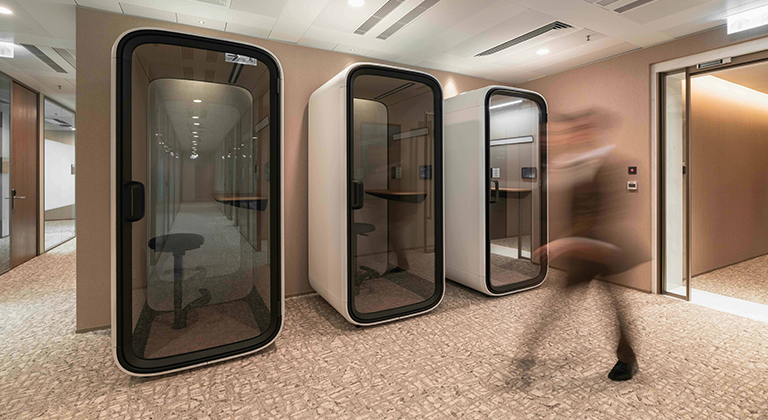Article
Thriving in the Age of AI: Humans, Machines, and the Future of Work
AI Is Here — But Value Is Optional
AI is no longer lurking on the edges. It sits inside the systems we rely on, surfacing patterns, predicting risks, and nudging decisions before most of us have finished our morning coffee. By 2026, over 80% of enterprises are expected to have deployed generative AI APIs or GenAI-enabled applications in production, up from less than 5% in 2023. Already, 71% of global enterprises are using GenAI in at least one business function.
Yet adoption alone does not deliver impact. A S&P Global survey found 46% of organisations saw little measurable gain from AI initiatives. Translation: AI is powerful — but only in the hands of humans who know what to do with it.
Work, Redesigned
AI can collapse hours of work into minutes. Field experiments with consultants show performance jumps of 40% on complex tasks, with time cut by 25%. Call-centre agents see productivity gains of 14% overall — and 34% for novices.
But the true revolution isn’t faster work — it’s different work. Humans no longer spend their time wrestling data into coherence. They are freed to exercise judgment, interpret nuance, and make strategic decisions. Consultants decipher patterns instead of crunching numbers. Call-centre agents engage customers instead of tallying metrics.
AI handles the mechanical; humans translate insight into action. AI multiplies information; humans multiply understanding. It is not merely more output — it is more value. Organisations that embrace this dynamic do not just work faster; they see differently, decide smarter, and create impact that machines alone cannot deliver.

Leadership Under the AI Microscope
AI doesn’t replace leaders; it exposes them. It won’t fix bad judgment; it amplifies it — faster, louder, uglier.
The leaders who thrive follow three instincts:
- Adaptive intelligence. In fast-moving markets, leaders need to interpret AI outputs, challenge them, refine them, and pivot. The ability to interrogate an algorithm’s suggestion matters as much as the suggestion itself.
- Cognitive empathy. Machines may flag a risk; humans decide whether to act on it, and how. Understanding human behaviour, culture, motivation, and even anxiety becomes a leadership lever — especially when AI exposes potential blind spots or unintended consequences.
- Strategic foresight. AI can show patterns, but humans must choose which pattern to follow, which opportunity to scale, and which risk to own. The role of the leader becomes architect of the decision ecosystem, not just executor.
The Dark Side: Risks & Limitations
For all its brilliance, AI is also lazy, literal, and occasionally wrong. Gartner predicts that over 40% of agentic AI projects may be scrapped by 2027 due to unclear value or poor governance.
Where things go sideways:
- Data & bias. AI reflects the data you give it. If historical decisions were biased, the AI will replicate those biases at speed.
- Governance & trust. If people don’t know where AI is used or who is accountable, they either ignore it or follow it blindly. Both are dangerous.
- Skill gaps & change fatigue. The most powerful AI is wasted if teams aren’t trained to interpret, challenge, and harness it. Leadership fatigue often surfaces when the promise of AI collides with the reality of integration.
- Over-automation. Automate everything and you risk deleting the very human pieces — ethics, trust, long-term care — that make you worth choosing.

Turning AI into Advantage
Five rules for using AI well:
- Encourage an experimenter’s mindset. Treat AI outputs as prompts for discussion, not final answers.
- Target high-value work. Automate the routine, obvious tasks — but don’t stop there. Use AI to elevate insight in critical areas: e.g., contract analysis, risk modelling, forecasting, and anomaly detection.
- Pilot, measure, scale. Test a meaningful use-case, set clear metrics (not just hours saved, but decisions improved), refine, then expand. Resist the vanity rollout.
- Make governance boringly clear. Explain outputs, assign accountability, embed review loops, and ensure teams understand the “why” behind the “what”. Without trust, adoption stalls.
- Upskill human teams. Invest in training, mindset-shift, and cultural fluency. AI magnifies what humans already do well — better questions, better decisions, better action.
Culture, Collaboration, and Why the Room Still Matters
Technology triggers change, but culture decides the outcome. Smart organisations design environments where AI is embedded, not siloed. Human judgement sits front and centre. Teams speak a shared language across functions. Decisions are shared, visible, and rooted in organisational values.
And as AI reshapes work, physical and virtual spaces become unexpectedly strategic. Because the real value of AI doesn’t happen in isolation — it happens in interaction. The right environment elevates human judgment and lets AI do what it does best: accelerate insight.
Hybrid, digitally wired meeting spaces translate AI at scale into human understanding, providing the infrastructure to access, visualise, and interrogate complex outputs. Collaboration hubs support cross-functional sprints and off-the-wall brainstorming, giving teams room to test, remix, and iterate ideas. Quiet focus zones allow insights to settle, letting judgment alchemise raw data into strategy.
Lounges, open floors, and modular rooms aren’t just aesthetic choices — they structure engagement, encourage transparency, and embed culture into the rhythm of work. They turn meetings into conversations, dashboards into debate, and AI into a partner rather than a tool. Space becomes a catalyst for intelligence, not just a container for it.

The Future of Work: Human + Machine
The future is not human versus machine. It is human plus machine.
Machines are extraordinary at scale, pattern, and speed. Humans are still better at context, ethics, imagination, and relationship. The art now is not choosing sides but choreographing the partnership.
As models, data, and compute become cheap, the scarce asset is judgement: what to optimise, what to protect, when to follow the model and when to walk away from it.
AI may move the chairs and draft the agenda. But only humans can decide what the meeting is actually for.




